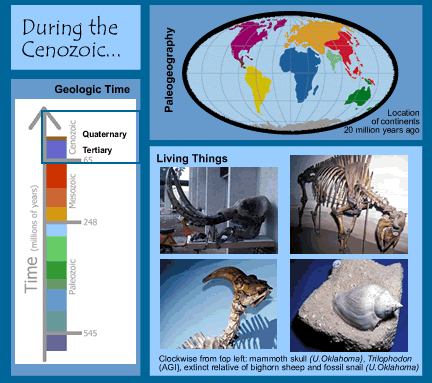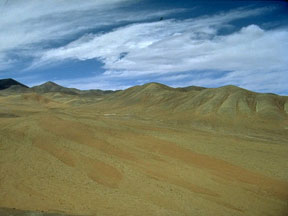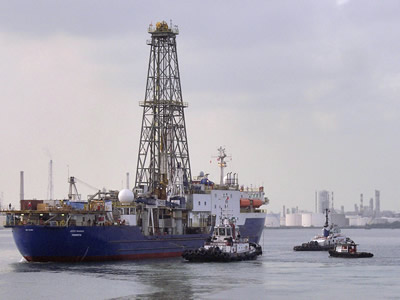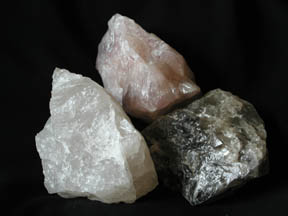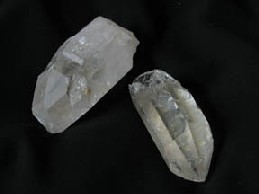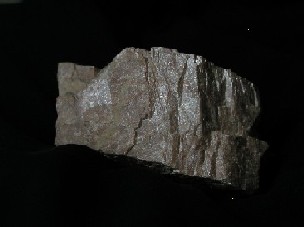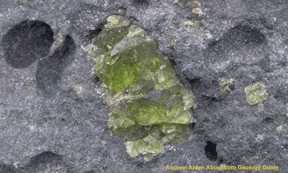Characteristics of the Cenozoic
Click on image for full size
L.Gardiner/Windows to the Universe
Click on image for full size
L.Gardiner/Windows to the Universe
Happenings During the Cenozoic (65 Million Years Ago to Present)
Time:
65 million years ago to today (and continuing!)
(See
the geologic timescale!)
Paleogeography:
- The Atlantic Ocean continues to widen as new ocean crust is formed at the Mid Atlantic Ridge.
- India collided with the Asian continent forming the Himalayan Mountains which continue to grow higher today.
- The African plate pushed into Europe forming the Alps.
- In North America, the Rocky Mountains formed and the Colorado Plateau was uplifted.
Climate:
- Early Cenozoic climate was warm and humid and the climate cooled gradually during the Cenozoic.
- During the past two million years, Earth's climate has cooled and warmed over and over again. The cool times are called Ice Ages because large amounts of ice formed on land. The last time that these sheets of ice were very large was 20,000 years ago. Most of the sheets of ice melted by about 10,000 years ago.
- Whenever climate cooled and ice sheets formed on land, there was less water left in the oceans, thus lower sea level. Sometimes lower sea level caused land that is usually underwater to connect continents. These areas of land, called land bridges, allowed animals to migrate to other continents.
Evolutionary Events:
- Mammals, which had been small and few during the Mesozoic, became more diverse. New mammal species evolved and were able to live in areas and eat foods that had been used by dinosaurs during the Mesozoic.
- Grass evolved and was well adapted to the cooler climates of the late Cenozoic.
- Horses and other species of grazing animals evolved and ate the newly-evolved grass. The first horses were small, about the size of a labrador retriever.
- Modern humans and their recent ancestors are called hominids. Thousands of fossils of hominids have been found; the oldest is more than 6 million years old. Fossils of hominids that are similar to modern humans are called Homo sapiens. Fossils of Homo sapiens are as much as 400,000 years old.
Last modified June 1, 2005 by Lisa Gardiner.


